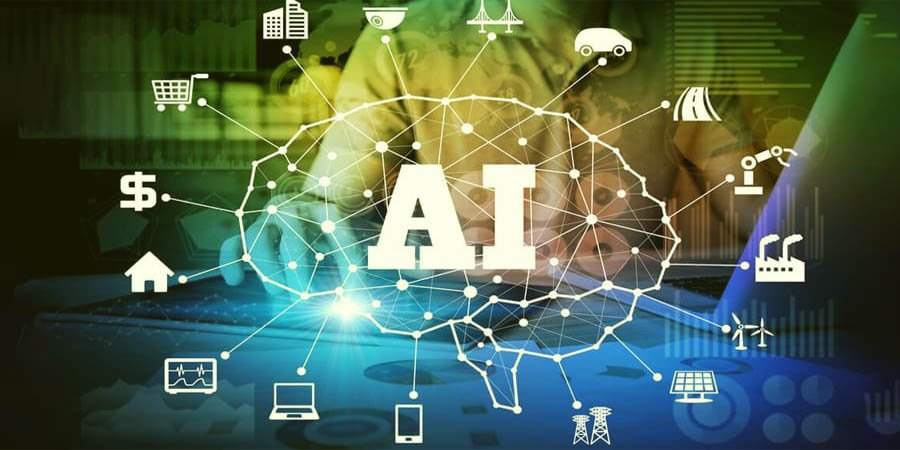現代は、AI(人工知能)の進化がめざましく、私たちの暮らしや社会は大きく変化しています。10年前には想像もできなかったような技術が、今では当たり前のように生活の中に溶け込み、便利さと効率をもたらす一方で、「これからの子どもたちは一体どんな仕事をするのか?」「AIに代替されないためには、どんな能力が必要なのか?」といった不安や疑問も増えています。さらに、私たち大人が経験してきた「勉強の仕方」や「仕事の仕方」が、そのまま次世代の子どもたちに通用するとは限らない時代になりました。
AIは情報を高速処理し、大量のデータをもとに最適な選択肢を提示したり、人の能力を超える分析を可能にしたりします。とはいえ、「すべての仕事がAIに取って代わられるわけではない」という見解も根強く、多くの専門家が「人間にしかできない領域が必ずある」と指摘しています。その“人間らしさ”を発揮できるかどうかが、将来の子どもたちのキャリアや生き方に大きく影響してくるでしょう。
では、具体的に子どもたちはどんなスキルを身につければ、AIと共存しながら豊かな人生を歩むことができるのか? 本記事では、“AI時代を生き抜くために子どもに身につけてほしい3つの“超”スキル”として、
- 自ら学び続ける力
- 創造的な発想力
- 他者と協働するコミュニケーション力
を取り上げ、それぞれのスキルを育むための家庭・学校での具体的な取り組み例もあわせて紹介していきます。
1. 自ら学び続ける力
「正解」だけに頼らない柔軟な学習姿勢
AI時代には、過去の知識や大量の情報を暗記することよりも、「新しい知識を自ら獲得し、アップデートし続けること」が重要になります。高速で進化するテクノロジーの世界では、今日の正解が明日には通用しない、ということが当たり前のように起こり得ます。
そこで必要なのが、「正解」に固執しすぎず、常に学び直しを楽しめる柔軟性です。子どもが「もう答えを覚えたから終わり」ではなく、「違う視点はないかな?」「もっと深く知りたい」と思う姿勢を育むことで、AIによる情報分析やデータ処理だけでは補いきれない“人間的な価値”を発揮できるようになります。
学び続けるための具体的なアプローチ
- 探究学習を取り入れる
学校の宿題や塾の問題集を解くだけが勉強ではありません。親子で一緒に興味を持ったテーマを深掘りする「探究学習」を日常の中に取り入れてみましょう。たとえば、身近な疑問(「なぜ空は青いの?」「海外ではどんなお菓子が人気?」など)を調べる過程で、子どもは「自分で答えを探す楽しさ」を体感できます。 - 多様な情報源から学ぶ
本や動画、Webサイト、博物館や地域の活動など、学びの場を幅広く探ってみることが大事です。AI時代はオンラインリソースが充実している反面、偏った情報のリスクもあります。いろいろな角度から情報を収集して比較するクセをつけることで、批判的思考力も同時に育まれます。 - 親自身も学ぶ姿勢を見せる
子どもに「勉強しなさい」というだけでなく、親が「最近こんな本を読んで勉強しているよ」「料理のレシピを試行錯誤して新しい発見をしたよ」といった姿を見せると、自然と“学び続ける姿勢”が家庭の文化となっていきます。
2. 創造的な発想力
ロボットにはない“オリジナリティ”を生む力
AIは膨大なデータからパターンを導き出すことに長けていますが、まったくゼロベースのアイデアを“独創的な形”で生み出す能力については、まだまだ人間の創造力が勝っている部分があります。ここでいう創造的な発想力とは、**「新しい組み合わせを思いつく力」「既存の枠組みにとらわれずに発想する力」**のことです。
将来的に、AIに分析や効率化が任されても、「じゃあ何を創りたいのか?」「どんな世界を作りたいのか?」という答えを出すのは人間である必要があります。創造的な発想力があれば、AIが持つデータ処理力を上手に活かし、より豊かな社会やサービスを生み出す原動力になれるでしょう。
発想力を伸ばす具体策
- アートや音楽、工作を日常に
自由に絵を描いたり、リサイクル素材で工作したり、楽器を弾いたり、何気ない活動を通じて五感を刺激し「自分ならでは」の表現を楽しむ経験を増やすことが大切です。 - “遊び”の中に学びを織り交ぜる
例えばブロックやレゴなどを組み合わせながら、決まった説明書を使わずに「自分なりのロボットを作ってみよう!」といった取り組みをしてみると、子どもはゲーム感覚で創造力を発揮できます。 - 好奇心を肯定し、無駄を楽しむ
「どうしてこんなことするの?」と思える子どもの遊びや実験を、頭ごなしに止めるのではなく、「面白いね、やってみよう」と肯定してあげる姿勢が大事です。遠回りな様でいて、そうした“無駄”なチャレンジの中に新しいアイデアのヒントが隠れていることも多いのです。
3. 他者と協働するコミュニケーション力
チームで新しい価値を創る時代
AI時代でも「人間同士のコミュニケーション」はなくなりません。むしろ専門性の細分化やグローバル化が進むほど、一人では解決できない課題が増えてきます。そこでは「多様な人材がチームを組み、アイデアやスキルを持ち寄る」ことが鍵となり、コミュニケーション能力が不可欠です。
特にオンラインのやり取りが増えると、テキストベースやビデオ会議などツールを使いこなす力も問われますが、最終的には「相手を理解しよう」「チームでより良い結果を目指そう」という意欲があるかどうかが大きく影響します。
コミュニケーション力を伸ばす実践法
- 対話の場を意識的につくる
家族で食事中に「今日あった出来事や気づき」を共有する時間を設けたり、子ども自身が興味を持ったテーマでミニプレゼンをしたりするなど、話す・聞く機会を意図的につくりましょう。 - チーム活動やボランティアに参加する
学校のクラブ活動や地域のイベント、ボーイスカウトやボランティアに参加することで、年代や立場の異なる人たちと協働する経験が積めます。そこでのトラブルや意見対立も、コミュニケーション力向上の貴重な学びの場となります。 - 感情を言葉で表現する練習
うまくいかないことや嫌なことがあったとき、ただ感情的にふるまうのではなく「自分はこう感じている」と言葉にする習慣をサポートしてあげるとよいでしょう。相手に伝わる言い方を工夫する力は、協働のベースになります。
まとめ:人間らしさを活かしてAIと共存する未来へ
AIがこれからさらに進化していくことは間違いありません。しかし、そうした高度なテクノロジーが発達すればするほど、人間ならではの創造性やコミュニケーション、学ぶ意欲のような“非認知能力”が際立ち、社会でより重要視されるようになるでしょう。
子どもたちが大人になる頃には、今私たちが予想する以上に大きく社会が変わっているかもしれません。けれど、彼らが「自ら学び続ける力」「創造的な発想力」「他者と協働するコミュニケーション力」を基盤にしていれば、予測不能な時代でも自分らしく活躍できるはずです。
親や教育者としては、一方的に知識を詰め込むのではなく、「子どもの自発性を尊重しながら、柔軟に学べる環境を整えること」「さまざまな失敗や挑戦を肯定してあげる姿勢」を大切にする必要があります。
テクノロジーと上手に付き合いながら、子どもたちが持つ無限の可能性を開花させる――それこそが、AI時代を力強く生き抜くための最良の準備ではないでしょうか。私たち大人もまた、彼らと一緒に学び、成長していきたいものですね。
Surviving the AI Era! Three “Super” Skills Kids Need to Acquire
In today’s world, the rapid evolution of AI (Artificial Intelligence) is transforming our lives and society. Technologies that were unimaginable just a decade ago are now seamlessly integrated into our daily routines, bringing convenience and efficiency. Yet this progress also sparks questions and concerns among parents and educators: “What kind of jobs will our children have in the future?” and “What abilities are essential to avoid being replaced by AI?” It’s becoming clear that the traditional ways of “studying” or “working” that we adults have experienced may not necessarily apply to the next generation.
AI excels at processing information quickly, selecting optimal solutions from massive data sets, and performing analyses beyond human capacity. However, many experts emphasize that “not all jobs will be taken over by AI,” and that there are domains only humans can handle. Indeed, whether a person can demonstrate this unique “human touch” will greatly influence the future career paths and overall lives of today’s children.
So, which specific abilities should children develop to coexist with AI and lead fulfilling lives? In this article, we’ll discuss three “super” skills essential for thriving in the AI era:
- The Ability to Keep Learning
- Creative Thinking Skills
- Communication Skills for Collaborating with Others
We’ll also explore some practical ways to cultivate these skills at home and in school.
1. The Ability to Keep Learning
A Flexible Approach That Goes Beyond Memorizing “Correct Answers”
In the AI era, continuously acquiring new knowledge and updating oneself is more valuable than merely memorizing vast amounts of information. Technologies change so fast that what’s “correct” today might be outdated tomorrow. Therefore, children need the flexibility to embrace ongoing learning without clinging to a single “right answer.” Rather than saying, “I’ve got the answer, so I’m done,” they should be encouraged to think, “Is there another perspective?” or “I want to delve deeper.” This mindset is what allows them to offer a uniquely human value that AI-powered data processing alone cannot replicate.
Practical Approaches to Lifelong Learning
- Incorporate Inquiry-Based Learning
Studying shouldn’t be limited to doing homework or practicing worksheets. Encourage kids to explore topics they find interesting together with you. For example, if they wonder, “Why is the sky blue?” or “What kinds of snacks are popular in other countries?”, investigate the answers with them. Through these mini-research projects, kids learn the joy of discovering answers on their own. - Use Diverse Information Sources
Books, videos, websites, museums, and community activities—all can be valuable learning resources. Although online information is abundant, it can be biased. Guide children to compare data from various sources so they can develop critical thinking skills as well. - Model the Learning Process
Instead of merely telling kids to “go study,” parents can show their own learning process. For instance, share how you’re reading a new book or experimenting with different cooking recipes. When children see that learning is a lifelong, enjoyable endeavor, it becomes part of your family culture.
Creative Thinking Skills
Human Originality That Robots Can’t Replicate
While AI is excellent at deriving patterns from massive data sets, it still lags behind humans in generating genuinely original ideas from scratch. “Creative thinking” here refers to the ability to come up with new combinations or think outside existing frameworks. Even if AI handles data processing and efficiency, humans still need to decide “What do we want to create?” and “What kind of world do we want to build?” Once children develop creative thinking, they can harness AI’s power and use it as a catalyst to create innovative services and a richer society.
How to Cultivate Creativity
- Include Art, Music, and Crafts in Daily Life
Encourage free drawing, making art from recycled materials, or playing musical instruments. By stimulating the senses and enjoying self-expression, children can develop their individual, creative style. - Infuse Play with Learning Elements
Use building blocks or LEGO but skip the instruction manual—ask kids to build their own unique robot. This playful approach sparks creativity and fosters problem-solving skills in a fun, game-like atmosphere. - Embrace Curiosity and Celebrate “Useless” Fun
When kids engage in what seems like pointless experiments or silly play, avoid discouraging them. Ask, “That’s interesting—shall we try it?” Even random or seemingly unproductive activities can yield hidden insights or new ideas.
3. Communication Skills for Collaborating with Others
Teamwork That Creates New Value
Even in an AI-dominated era, human-to-human communication won’t vanish. In fact, as specialization and globalization accelerate, we’ll face more problems that one person alone can’t solve. Consequently, effective team collaboration—where different talents share their expertise—will be vital, making communication skills essential. With more online interactions, it’s necessary to master tools for text-based messaging or video conferences. Ultimately, though, the mindset of “I want to understand others” and “Let’s aim for a better outcome together” is what truly makes collaboration succeed.
Practical Steps to Enhance Communication
- Create Intentional Dialogue Spaces
At family meals, set aside time for everyone to share daily experiences. Alternatively, let children make mini-presentations on topics they find interesting. This ensures regular opportunities to speak and to listen actively. - Participate in Group Activities or Volunteering
Joining school clubs, local events, scouting, or volunteer programs exposes children to people of different ages and backgrounds. While conflicts or differences of opinion may arise, these challenges serve as valuable lessons in communication and collaboration. - Practice Expressing Feelings in Words
When something goes wrong or makes them upset, children should learn to say “I feel this way” instead of reacting purely by emotion. Helping them articulate their thoughts paves the way for more constructive communication.
Conclusion: Harnessing Humanity to Coexist with AI
It’s clear that AI will continue advancing. But the more sophisticated technology becomes, the more society will value uniquely human qualities such as creativity, communication, and a willingness to keep learning—collectively known as “non-cognitive skills.” By the time today’s children become adults, the world may change far more dramatically than we can imagine. However, if they have The Ability to Keep Learning, Creative Thinking Skills, and Communication Skills for Collaboration, they’ll be equipped to adapt and thrive.
For parents and educators, the key is not to push a one-way transfer of knowledge but to respect children’s autonomy and create flexible environments where ongoing learning is the norm. Embracing mistakes and curiosity is critical in unlocking the boundless potential within each child. Learning to navigate technology while nurturing human strengths is the best preparation for a powerful, confident future in the AI era. We adults can also learn and grow alongside them.




コメント